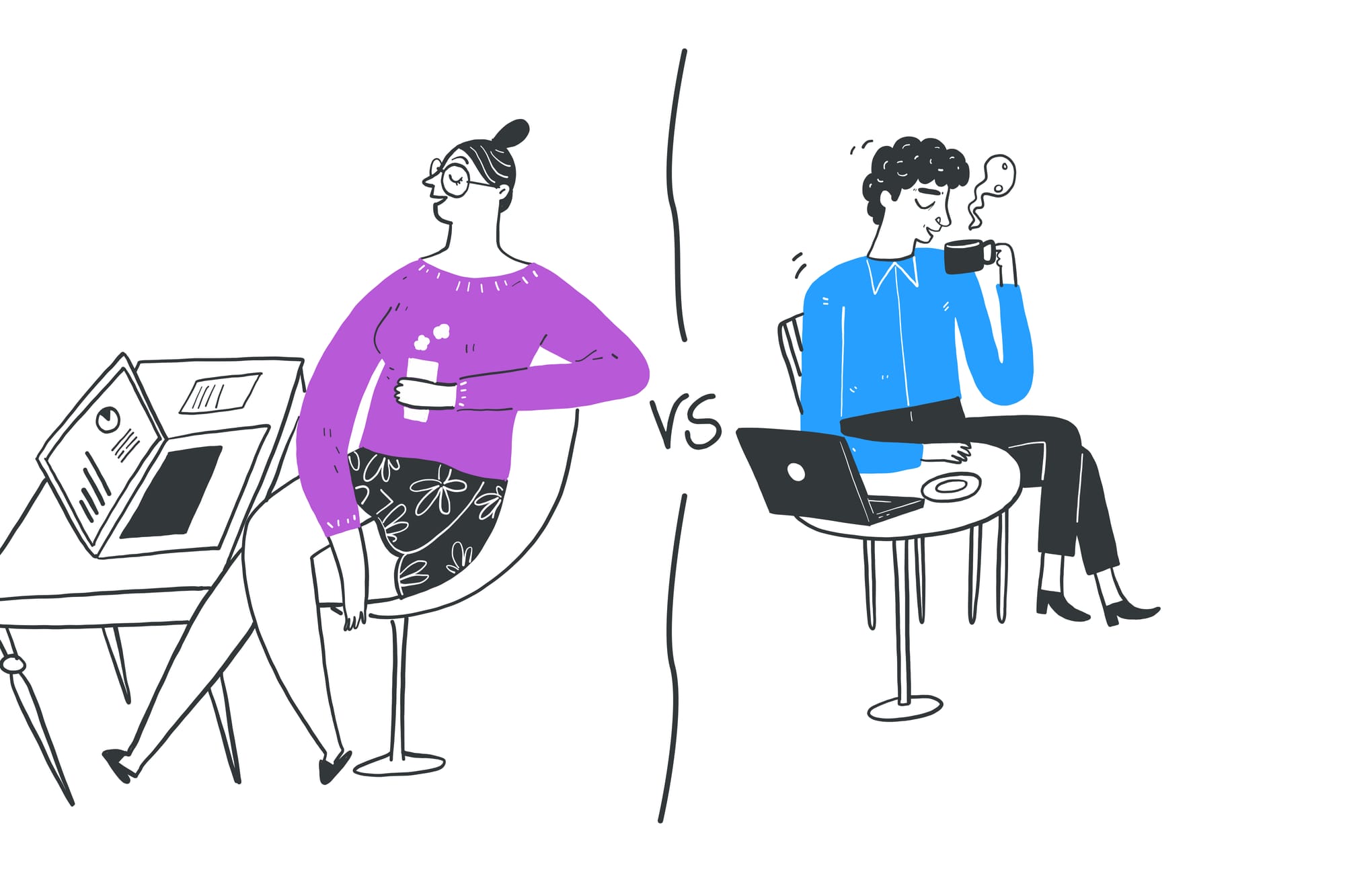A Performance Improvement Plan (PIP) is a written document used by employers to address and improve poor performance in their employees. Note: It’s typically implemented when an employee’s performance is not meeting the required standards, despite previous informal attempts to address the issues. It is in no way a clear indication of being fired (read below). Yet, it should be taken seriously.
A PIP is not addressed verbally as it's a formal document. In it, you'll find an outline of areas of performance, clear expectations, sets specific actions for improvement, and provides a structured path for employees to follow.
It serves as both a roadmap for the employee and a tool for the employer to track progress and provide necessary support. The PIP is usually the result of seeing continual poor performance reviews.
What Information Should a Performance Improvement Plan Have?
A Call to Action to Setting Performance Expectations
A well-crafted Performance Improvement Plan should include the following components:
Performance Expectations: Setting clear criteria for an employee's progress, meeting specific goals outlined in the PIP process, and delivering the expected level of quality and quantity of work within an agreed-upon timeframe. The PIP process should be a tool for both the manager and employee to facilitate open communication, provide constructive feedback, and ensure mutual understanding of performance standards and objectives.
Measurable Goals: Quantifiable targets that the employee needs to meet.
Timeline: A set timeframe within which the improvement must be achieved.
Resources and Support: Tools, training, or additional resources. Mentorship should be made available to the employee.
Evaluation Method: Criteria and methods for assessing progress.
Consequences: Potential outcomes if performance does not improve, such as further action or termination.
Employee's Current Performance: Assessing the employee's current performance, identifying areas needing improvement, and collaborating with the employee to create a plan for reaching the desired performance level.
Signatures: Acknowledgement from both the employee and the employer.
Examples of Performance Improvement Plans
1. Low Productivity and Work Output
Scenario: John, a software engineer, has been consistently missing deadlines and his work output is significantly lower compared to his teammates.
PIP Details:
Objective: Have an honest conversation about performance and improve performance to increase work output to match team average.
Goals:
- Complete assigned tasks within the set deadlines.
- Improve daily coding hours from 4 to 6.
- Meet expectations by achieving intermediary goals set during the PIP.
Timeline: 3 months.
Resources and Support:
- Weekly one-on-one meetings with the team lead for feedback and guidance.
- Access to proper tools and time management workshops.
Evaluation Method:
- Weekly progress reports to ensure employee receives feedback.
- Comparison of completed tasks against the planned schedule.
Consequences: Further review and potential disciplinary action if no improvement is seen after 3 months. Take employment actions if necessary.
2. Low Quality Coding
Scenario: Sarah, another software engineer, has been receiving feedback about the high number of bugs in her code.
PIP Details:
Objective: Identify root cause of performance deficiencies. Provide clear expectations and improve the quality of code by reducing the number of bugs.
Goals:
- Reduce the number of bugs in the code by 50%.
- Implement and follow best coding practices and standards.
Timeline: 2 months.
Resources and Support:
- Code review sessions with senior engineers.
- Access to online courses on clean code practices.
Evaluation Method:
- Monitoring bug reports.
- Peer reviews and feedback.
Consequences: Reassignment to different projects or additional training if quality does not improve.
3. Lack of Engagement: Poor Culture
Scenario: Michael, a software engineer, seems disengaged and does not participate in team activities or discussions.
PIP Details:
Objective: Identify areas of disengagement. Increase engagement and participation in team activities.
Goals:
- Actively participate in all team meetings and discussions.
- Contribute at least one idea or feedback in each meeting.
Timeline: 1 month.
Resources and Support:
- Mentorship sessions with a team leader to discuss engagement strategies and encourage employees to develop new skill sets.
- Access to team-building activities and workshops to motivate and encourage employees to participate.
Evaluation Method:
- Tracking participation in meetings.
- Feedback from team members.
Consequences: Further action, including potential reassignment or involvement in different projects if no improvement is seen.
4. Performance Issue: Not Delivering Features on Time
Scenario: Emily, a software engineer, has been struggling to deliver features by the deadlines, affecting project timelines.
PIP Details:
Objective: Improve feature delivery times and adhere to project schedules, providing underperforming employees a chance to enhance their performance.
Goals:
- Meet 90% of the feature delivery deadlines over the next three months.
- Break down tasks and provide regular updates on progress.
Timeline: 3 months.
Resources and Support:
- Project management training.
- Bi-weekly check-ins with the project manager to monitor progress and address any roadblocks.
Evaluation Method:
- Tracking feature completion against deadlines.
- Regular status reports and feedback sessions.
Consequences: Discussion of role suitability and potential changes if deadlines continue to be missed.
Does a Performance Improvement Plan Mean You're Getting Fired?
A Performance Improvement Plan (PIP) does not necessarily mean you are getting fired, but it's a serious indication of an employee's performance.
A PIP simply means your employer is concerned about your performance and expects improvement. Here are some key points to consider:
Opportunity for Improvement: A PIP is intended to give you a clear understanding of your employer’s expectations and the specific areas where your performance needs to improve. It often includes measurable goals, a timeline, and resources to help you succeed.
Formal Documentation: Being placed on a PIP means your performance issues are being formally documented. This documentation can be used as a basis for future employment decisions, including termination if improvements are not made.
Potential for Termination: While a PIP is not an immediate precursor to termination, failure to meet the outlined goals within the specified timeframe can lead to disciplinary actions, including possible dismissal. Poor performance, if not addressed, can result in termination despite the PIP's intention to help you improve.
Proactive Response: Take a PIP seriously and view it as an opportunity to address any shortcomings. Communicate openly with your supervisor, seek feedback regularly, and utilize any offered resources or training.
Consult HR or Legal Advice: If you feel the PIP is unfair or not achievable, it may be beneficial to consult with your Human Resources department or seek legal advice to understand your rights and options.
In summary, a PIP is a warning sign, but it also provides a chance to improve your performance and retain your position. How you respond to it can significantly influence the outcome.
Conclusion
A Performance Improvement Plan (PIP) is a valuable tool for both employers and employees to address and rectify performance issues. By setting clear objectives, measurable goals, and providing the necessary support, a PIP can guide employees towards improvement and success. Whether it’s low productivity, coding quality, engagement, or timely delivery, a PIP can help identify the root causes and pave the way for better performance and a healthier work environment. The benefits of implementing a performance improvement plan pips are endless, enabling employee mobility and personal growth, and benefiting both the employee and employer.





